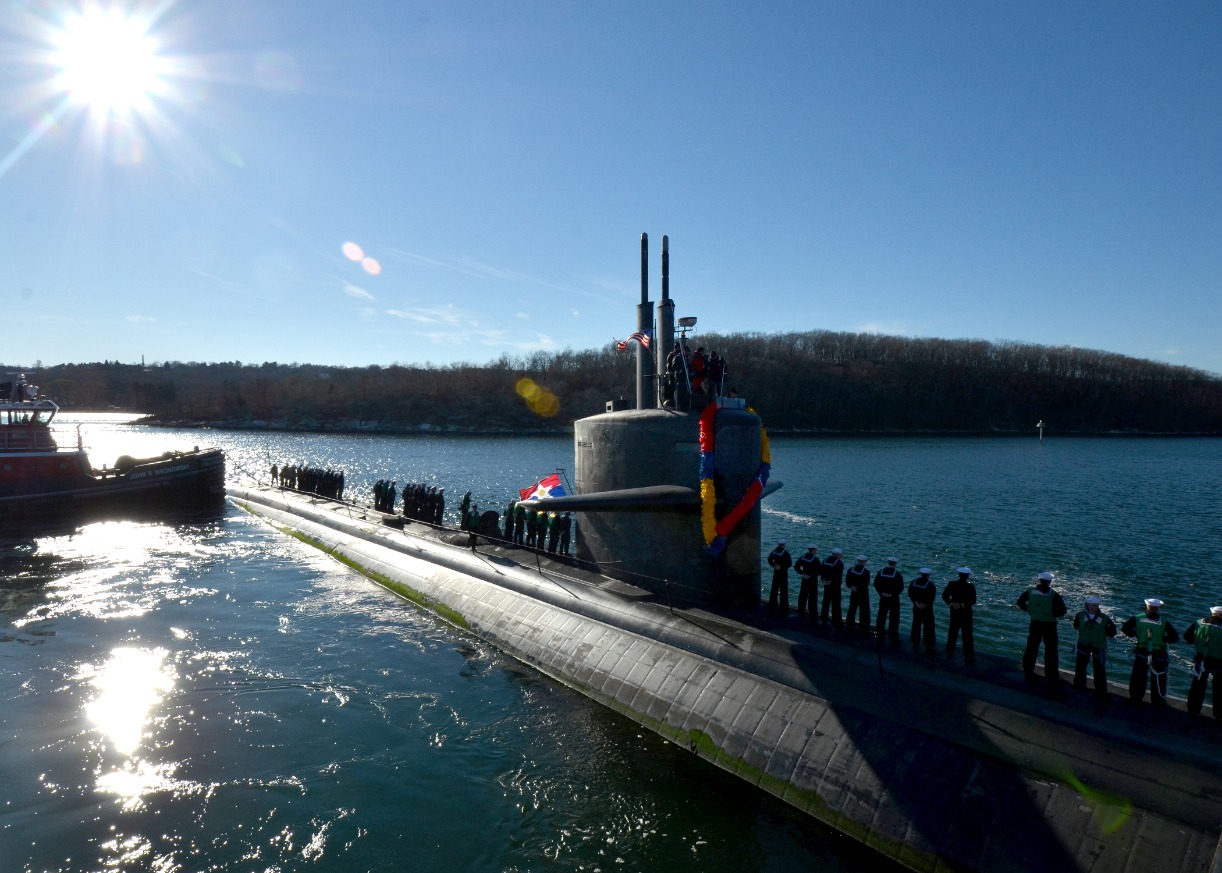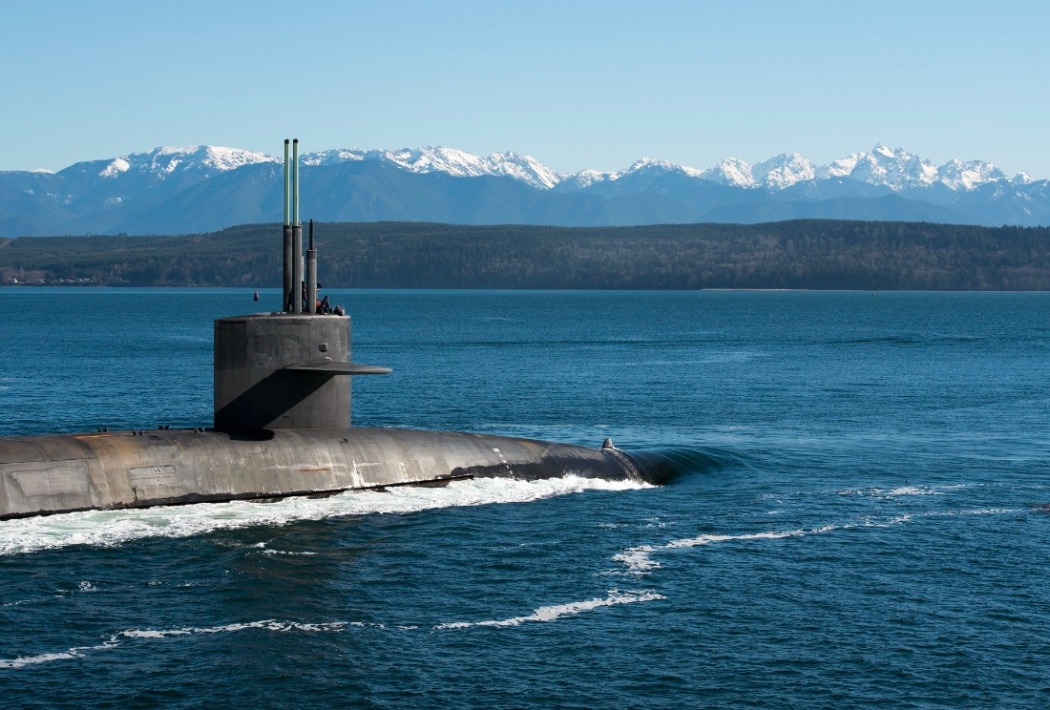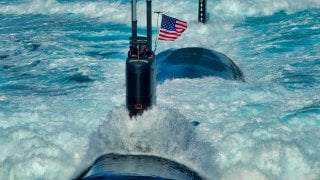A U.S. Navy Attack Sub Crashed Into a Russian Submarine Near a Naval Base
In 1992, just months after the Soviet Union collapsed, a collision between the USS Baton Rouge and a Russian Sierra-class submarine near Kildin Island, close to Murmansk, highlighted the fragile state of Russia’s military.
What You Need to Know Right Now: In 1992, shortly after the collapse of the Soviet Union, the USS Baton Rouge, a U.S. Navy Los Angeles-class submarine, collided underwater with a Russian Sierra-class nuclear-powered submarine near Kildin Island, close to Russia's Murmansk naval base.

-The American submarine was on a covert mission, speculated to involve surveillance of Russian naval activities. The collision caused superficial damage but heightened diplomatic tensions between the U.S. and Russia's new government under President Boris Yeltsin.
-This incident highlighted the risks of covert submarine operations in sensitive areas and foreshadowed future challenges in U.S.-Russia relations. It underscores the need for improved preparedness to prevent similar occurrences in modern naval operations.
Underwater Collision: USS Baton Rouge and Russian Submarine Clash in 1992
The year 1992 was a momentous time in the annals of history. It was the year after the Soviet Union, America’s greatest geopolitical foe of all time (until the rise of the People’s Republic of China in the 21st century, that is), collapsed—despite the prognostications from the US intelligence community that said the Reds would continue challenging the Americans in perpetuity.
That transition era from the Soviet Union to the Russian Federation was particularly jarring for Moscow. Seemingly overnight, the Russians went from presiding over one of the most fearsome war machines in history to trying to manage a collapsing empire and shoving off the ideological shackles that Marxist-Leninism had imposed upon the country. Part of that transition period, sadly, entailed the utter decline of Russia’s military capabilities and prowess.
In the immediate months following the collapse of the USSR, Moscow struggled to maintain their capabilities. They attempted to desperately showcase to the world that the new Russian Federation could conduct sophisticated—and expensive—military operations in the same manner that the old Soviet Union had done.
The Kildin Island Incident
But one incident in 1992, off the coast of Kildin Island, just fourteen miles away from Russia’s important naval facility in Murmansk, put to bed the notion that Boris Yeltsin’s government could operate with the same lethality in military affairs that did the fearsome Soviet military.
That incident was an underwater collision between a United States Navy Los Angeles-class submarine, the USS Baton Rouge, and a Russian Sierra-class nuclear-powered submarine. The American submarine was conducting a covert mission that was never fully revealed. However, given the proximity to the sensitive Russian naval facility at Murmansk, many speculated it was covert surveillance either of the types of vessels coming in and out of the base and/or tapping into the sensitive undersea communications infrastructure.
Regardless of the specific mission of the American submarine, the Russian Sierra-class sub smashed into the bottom of its hull. The Russian sub's titanium hull superficially damaged the American submarine, to the point that sensitive tiles the Americans line their submarine hulls with to deflect sonar waves from enemy submarines were lodged into the Russian hull thereafter.
A pack of lazy reporters at the time made the case that the American and Russian submarines had been chasing each other when the accident occurred. This could be forgiven—to a point. After all, the Soviet Union had collapsed just two months before this infamous incident. Judging from the geography of the area and the way the Russian crew behaved, it was likely not the result of vestigial submarine Cold War games. The Russians had no clue the Americans were above them when they surfaced and the Americans were equally stunned by the rather loud knock their underside received.
A Diplomatic Disaster
It was, however, quite the diplomatic row at the time. The Americans had to go hat-in-hand to the new Russian leader, Boris Yeltsin, and ensure the Russian Federation that they would scale back the tempo of their Cold War-era operations near contested Russian territory.
Of course, that was mere lip service. Boris Yeltsin’s government, which, on top of being an utter mess, was also the most pro-democracy and pro-American Russian regime in history, would have a similar encounter just one year later off the Kola Peninsula.

While not expressly referenced, it is likely that this and other incidents that occurred between NATO elements and Russia in the post-Cold War era fed into Boris Yeltsin’s infamous “Cold Peace” speech made at the Budapest Security Summit in 1994.
In that speech, Yeltsin chastised then-President Bill Clinton about “sowing the seeds of mistrust” after decades of painful Cold War.
Yeltsin then warned Clinton, a world leader with whom Yeltsin had mostly strong relations with, about the prospects of having freed Europe “from the heritage of the Cold War” but, thanks to NATO expansion (and various other provocative US military actions) put Europe “in danger” of being “plunged into Cold Peace.”
A Portent of Things to Come?
What’s more, the incident near Murmansk between the Sierra-class submarine and the USS Baton Rouge highlighted the dangers that still pervade sensitive covert submarine missions deep inside enemy territory. Baton Rouge would later be retired after the incident.
These incidents have happened not only in and around the waters of a failing state, like the former Soviet Union, or with old technologies, they happen periodically—as recently as 2021, when the USS Connecticut struck an undersea mountain.
In a modern combat setting, when the stakes are even higher, they are likely to occur. The Navy must be better prepared.
Author Experience and Expertise: Brandon J. Weichert
Brandon J. Weichert, a National Interest national security analyst, is a former Congressional staffer and geopolitical analyst who is a contributor at The Washington Times, the Asia Times, and The-Pipeline. He is the author of Winning Space: How America Remains a Superpower, Biohacked: China’s Race to Control Life, and The Shadow War: Iran’s Quest for Supremacy. His next book, A Disaster of Our Own Making: How the West Lost Ukraine, is due October 22 from Encounter Books. Weichert can be followed via Twitter @WeTheBrandon.
All images are Creative Commons or Shutterstock.
From the Vault
Russia Freaked Out: Why the U.S. Navy 'Unretired' the Iowa-Class Battleships
Battleship vs. Battlecruiser: Iowa-Class vs. Russia's Kirov-Class (Who Wins?)


